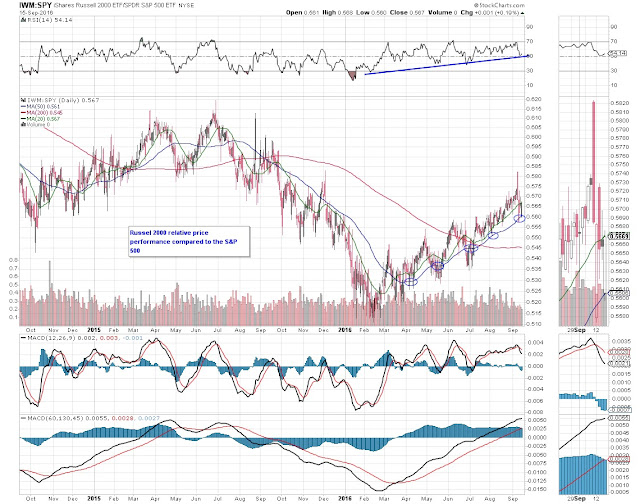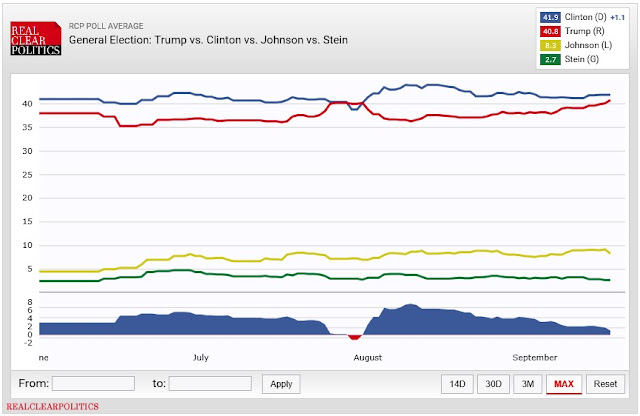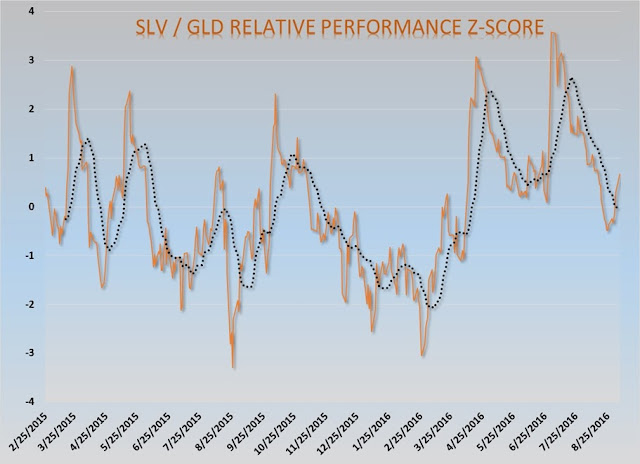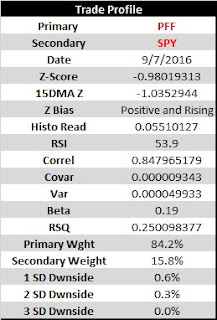Volatility is back. In our core Fishbone model we remain in
cash and are waiting for a clearer picture from the market before wading back
in. On the daily S&P 500 chart the key levels of support are 2120, 2100,
2015 and 2000. The 2120 level has held thus far which was prior resistance. The
2100 level is the bottom of the trend line from the February lows. The 2050 to
2060 level is both the 200 day moving average and the 38.2% Fibonacci
retracement from the February lows and 2000 is both a psychological figure and
the 50% Fibonacci retracement from the February lows.
Ideally we want to see the S&P 500 retake the 20 and 50
day moving averages and have MACD momentum improve before taking aggressive
long positions.
The daily Nasdaq shows waning momentum on all the
oscillators as well as MACD. It’s settling in near the 5190 level that was
previous resistance and is holding the 20 and 50 day moving averages. A
breakdown could send the index to the 5000 level. The next stop below that is
around 4900 which is the 200 day moving average and the 38.2% Fibonacci
retracement from February. Unlike the S&P 500, the Nasdaq isn’t sitting
below its moving average trend lines but ideally we would like to see momentum
improve.
The Russell 2000 bounced off the 1200 support level and has
retaken the 50 day moving average.
Should the market start to rebound strongly from here, we
believe the small cap sector could be a relative outperformer. During the
recent bout of volatility, it appears the small caps have suffered the worst
relative to the S&P 500 and Nasdaq. Looking at the relative performance of
these indices it appears the small caps are sitting on major support levels
relative to the others.
On The Sidelines
Aside from watching the technical picture, we’re waiting for
several key events in September to happen before we move back into equities.
Key central bank meetings from the Fed and BOJ as well as the first
presidential debate.
The Fed
Regarding the Fed, we’re looking at a fairly low probability
of a September rate hike, near 20%. An increase in rates by the Fed in
September would act as a shock to the market and could send the market lower –
or at the very least increase volatility in a very dramatic way. Considering we
are right in front of the elections we do not expect the Fed to raise in
September. The Fed also sees the probabilities and one would imagine they too
wouldn’t want to introduce excessive market volatility at this juncture.
That said they could leave rates unchanged but change to a
more hawkish message to lay the ground work for a rate hike in December. This
is probably a more likely outcome and can have negative effects on equity
prices as well but to a lesser degree.
The markets had recently priced in higher rates. Looking at
utilities vs. financials is a great way to catch a glimpse of how the market views
the interest rate environment. The following chart looks at the relative pricing
comparison between utilities (XLU) and financials (XLF). We had a breakout
earlier this year and have held support a few times. We have recently reached
that support level and are now bouncing off. Ultimately even with a 25bp
increase in the fed funds we believe utilities will remain attractive for
income seeking investors and margins at financial companies will see a slight
improvement. We don’t anticipate the relative outperformance of utilities (up
17% this year) to financials (up 3% this year) to end just yet.

Long-term treasuries (TLT) have also trended higher this
year relative to financials. The price comparison between the two recently
tested the up channel support and will likely hold as the trend of excessively
low interest rates isn’t ending anytime soon, in our opinion. The economy just
doesn’t seem like it’s there yet (see
Our Thoughts On The Economy).
The Election
The market frowns on uncertainty and there is little doubt
that Trump is gaining ground on Clinton in the polls. According to real clear
politics Trump is now only 1.1 points behind Clinton nationally, and gaining
ground.
While Trump has a long way to election, a path is starting
to materialize. The chart below shows the current electoral map giving Clinton
the edge.
Within the battleground states, Trump is polling ahead of Clinton
in Ohio, Florida, Iowa, Arizona and Georgia. He is virtually tied in Nevada and
North Carolina. If we give Trump all these states and the remaining to Clinton
she will win the presidency.
That said, if we keep our electoral map assumptions constant
but Trump pulls an upset in any of the states that are circled in Red. Trump
wins!
The current campaign strategy that Trump is utilizing is
working. Tone down the rhetoric and stick to the issues. The Clinton campaign
is up against major difficulties at this point. They have to (1) promote the
existing policies that are largely unpopular with a large portion of the
country; (2) continually try to deflect and defend past misdeeds and health
issues which is difficult to do with a daily drip of perceived indiscretions by
Clinton and; (3) continually attack Trump which is becoming an annoyance for
those that are interested in the issues and haven’t yet made up their mind to
vote.
This has the makings of an upset and we believe the first
debate this month will set that tone and could conceivably decide the race. If
Trump comes out on top it could initiate a more aggressive equity sell-off in
the near-term.
As mentioned the market does not like uncertainty. Perhaps
the new Trump will surprise the market with a more focused and pinpointed way
to get his message across but historically he has said things that could have
caused an equity sell-off if he were a serious contender. If the situation
arises and he is the front-runner the market will start paying attention to his
words much more than they have in the past, in our opinion.
What was said in the past that could damage investor
sentiment:
“Trump:
Americans should avoid stock market - Donald Trump suggested Tuesday that
Americans should not place their retirement funds into the stock market,
warning of “some very scary scenarios.”” – The Hill 8/2/16.
There are those that share the unease of having a leader
that talks first and thinks later.
“Wall
Street is unprepared for a Trump victory - Should Trump continue to rebound
in the polls, watch for market volatility to increase as investors brace for
uncertainty. Citigroup recommends increasing exposure to precious metals like
gold as an offset. Yet any associated selloff could prove a buying opportunity.”
– Business Insider 9/2/16.
“Opinion:
Politics is the bull market’s biggest hurdle - David Woo, head of global
interest rate and foreign exchange strategy for Bank of America Merrill Lynch,
said Wall Street is pricing in a big Clinton victory, but investors could start
selling if she lags in the polls. He argues investors prefer the likely
gridlock, slow growth and easy monetary policy a Clinton presidency would offer
to a potential bull-in-the-china-shop Trump administration. As the old saying
goes, the devil you know. ...” – Market Watch 9/9/16.
“If
Trump wins, stocks will crash 50%: Wedbush pro - All in all, Winer {Ian
Winer, Wedbush's director of equity sales trading} believes Trump's policies would lead to a nation on weaker fiscal
footing, with a lack of cheap labor and a lack of cheap goods. In this
environment, the multiple paid on S&P 500 earnings would dramatically
decrease, he said.
"If all the
policies are enacted," the S&P's price-to-earnings ratio "could
go as low as 11," which is how you "get to 1,000 on the
S&P," Winer wrote. That would represent a 50 percent drop from current
levels.” – CNBC 3/16/16.
“Clinton
Health Another Land Mine for Suddenly Vulnerable Markets – “If Clinton’s
health becomes a larger factor with regard to voter decision-making, the market
may have to recalculate the risk-reward of a regime change in the White House,
as Clinton right now is assumed as a continuity from the current
administration,” Yousef Abbasi, global market strategist at JonesTrading
Institutional Services LLC, said by phone. “Obviously today is another thing
that’s going to draw closer attention.” – Bloomberg 9/11/16.
Bank of Japan
The last event of September that we will be watching closely
are the monetary policy decisions that will come out of Japan. With $13
trillion of global debt sitting at yields below 0% the folks at the BOJ are
seeking new and innovative ways to keep their economy chugging along. It would
seem that they are talking about instituting their own version of “operation twist”
and are exploring the idea of manipulating the steepness of the yield curve on
their sovereign debt. The idea is that artificially low rates and a flat yield
curve has pinched banking institutions, pensions, savers, insurance companies,
etc. - basically any corporation or person that relied on an income and/or
yield spread strategy to profit are suffering. Their argument as I understand
it is that the flatness of the yield curve is hindering economic growth.
There are two problems we see here. The first is that the
steepness of the yield curve should be a market driven function that reflects
market participants’ views towards future economic growth expectations.
Attempting to manipulate rates over the long term is futile and we don’t
understand the consequences of such actions yet, in our view. With all the
experimental monetary policy happening in the global economy today, the truth
is that we haven’t really seen the return to a robust global economy.
That said, because of the low/zero interest rate policies
that have been in place for so long and the relative flatness of the yield
curve, many of these banking institutions, pensioners, savers, insurance
companies, etc. have spent years making adjustments to minimize the profit
impact of these policies. Thus they may have a greater than wanted exposure to
longer term instruments, exposure to increased leverage and concentrated
portfolios. If the BOJ were to deliberately attempt to steeped the long yield,
these types of investment structures would suffer dramatically as the duration
on their portfolios may be higher than desired and more sensitive to adverse
pricing pressure.
This type of market event could exacerbate a sell-off in the
fixed income market that could very well spill over to equities.
Bottom Line: We
continue to sit on the sidelines as this coming week contains a few pitfalls
that could have an effect on the US equity markets. If market volatility
continues then we will remain in cash in our core Fishbone portfolio and will
continue to wait for an appropriate entry point. If we sail through the
remainder of the month and the market regains its footing, then we will
redeploy and take advantage of the upside.
Key Dates
September 21 – Both the
Fed and BOJ meet to determine the future direction of monetary policy.
September 26 – The first
presidential debate.
Joseph S. Kalinowski, CFA
Email: joe@squaredconcept.net
Twitter: @jskalinowski
Facebook: https://www.facebook.com/JoeKalinowskiCFA/
Blog: http://squaredconcept.blogspot.com/
Web Site: http://www.squaredconcept.net/
Additional Reading
No part of this report may be reproduced in any manner
without the expressed written permission of Squared Concept Asset Management,
LLC. Any information presented in this
report is for informational purposes only.
All opinions expressed in this report are subject to change without
notice. Squared Concept Asset
Management, LLC is a Registered Investment Advisory and consulting company.
These entities may have had in the past or may have in the present or future
long or short positions, or own options on the companies discussed. In some cases, these positions may have been
established prior to the writing of the particular report.
The above information should not be construed as a
solicitation to buy or sell the securities discussed herein. The publisher of this report cannot verify
the accuracy of this information. The
owners of Squared Concept Asset Management, LLC and its affiliated companies
may also be conducting trades based on the firm’s research ideas. They also may hold positions contrary to the
ideas presented in the research as market conditions may warrant.
This analysis should not be considered investment advice and
may not be suitable for the readers’ portfolio. This analysis has been written
without consideration to the readers’ risk and return profile nor has the
readers’ liquidity needs, time horizon, tax circumstances or unique preferences
been taken into account. Any purchase or sale activity in any securities or
other instrument should be based upon the readers’ own analysis and
conclusions. Past performance is not indicative of future results.
















































